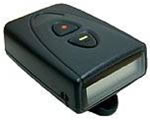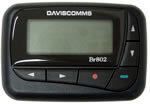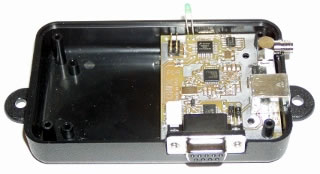BloostonLaw Telecom Update Published by the Law Offices of Blooston, Mordkofsky, Dickens, Duffy & Prendergast, LLP [Portions reproduced here with the firm's permission.] www.bloostonlaw.com |
| Vol. 13, No. 11 | March 17, 2010 |
 FCC Adopts NBP Joint Statement At its March 16 open meeting, the FCC adopted the following Joint Statement with regard to the National Broadband Plan: “Although each of us may have differing opinions on some of the specific recommendations set forth in the Plan, we all share the following common beliefs”: - Strategic and prudent policies toward public resources like spectrum will benefit all Americans, by meeting current and future needs and by promoting continued innovation, investment, and competition.
- The nearly $9 billion Universal Service Fund (USF) and the intercarrier compensation (ICC) system should be comprehensively reformed to increase accountability and efficiency, encourage targeted investment in broadband infrastructure, and emphasize the importance of broadband to the future of these programs.
- Our Nation should harness the tools of modern communications technology to protect all Americans, including by enabling the development of a nationwide, wireless, interoperable broadband network for the Nation’s first responders.
- Ubiquitous and affordable broadband can unlock vast new opportunities for Americans, in communities large and small, with respect to consumer welfare, civic participation, public safety and homeland security, community development, health care delivery, energy independence and efficiency, education, worker training, private sector investment, entrepreneurial activity, job creation and economic growth, and other national purposes.
|
FCC Sends NBP To Congress The FCC today delivered its National Broadband Plan (NBP) to Congress. In early 2009, Congress directed the FCC to develop such a plan to ensure every American has “access to broadband capability." Congress also required that this Plan include a detailed strategy for achieving affordability and maximizing the use of broadband to advance consumer welfare, civic participation, public safety, homeland security, and other national purposes. Much more will be learned about the details of the Broadband Plan as the FCC issues Notices of Proposed Rulemaking to develop the rules that will implement the new plan. However, it is clear that the plan will largely dismantle the Universal Service Fund (USF) as we know it, and it is not at all clear that the replacement programs will benefit rural America enough to compensate for this impact. FCC Task Force Presentation - Blair Levin, Executive Director of the FCC’s Omnibus Broadband Initiative (OBI) told the Commission that they should view the Plan as a first step, and that it should evolve over time. We know there is a crisis with the USF, intercarrier compensation, and spectrum, he said. The time is not for slogans, but solutions.
- Staff said in the next few weeks schedules of proceedings, including the 500 MHz, public safety, and tribal lands proposals, will be released.
|
The Plan Government can influence the broadband ecosystem in four ways: 1. Design policies' to ensure robust competition and, as a result maximize consumer welfare, innovation and investment. 2. Ensure efficient allocation and management of assets, government controls or influences, such as spectrum, poles, and rights-of-way, to encourage network upgrades and competitive entry. 3. Reform current universal service mechanisms to support deployment of broadband and voice in high-cost areas; and ensure that low-income Americans can afford broadband; and in addition, support efforts to boost adoption and utilization. 4. Reform laws, policies, standards and incentives to maximize the benefits of broadband in sectors government influences significantly, such as public education, health care and government operations. 1. Establishing competition policies. Policymakers, including the FCC, have a broad set of tools to protect and encourage competition in the markets that make up the broadband ecosystem: network services, devices, applications and content. The plan contains multiple recommendations that will foster competition across the ecosystem. They include the following: - Collect, analyze, benchmark and publish detailed, market-by-market information on broadband pricing and competition, which will likely have direct impact on competitive behavior (e.g., through benchmarking of pricing across geographic markets). This will also enable the FCC and other agencies to apply appropriate remedies when competition is lacking in specific geographies or market segments.
- Develop disclosure requirements for broadband service providers to ensure consumers have the pricing and performance information they need to choose the best broadband offers in the market. Increased transparency will incent service providers to compete for customers on the basis of actual performance.
- Undertake a comprehensive review of wholesale competition rules to help ensure competition in fixed and mobile broadband services.
- Free up and allocate additional spectrum for unlicensed use, fostering ongoing innovation and competitive entry.
- Update rules for wireless backhaul spectrum to increase capacity in urban areas and range in rural areas.
- Expedite action on data roaming to determine how best to achieve wide, seamless and competitive coverage, encourage mobile broadband providers to construct and build networks, and promote entry and competition.
- Change rules to ensure a competitive and innovative video set-top box market, to be consistent with Section 629 of the Telecommunications Act. The Act says that the FCC should ensure that its rules achieve a competitive market in video "navigation devices," or set-top boxes—the devices consumers use to access much of the video they watch today.
- Clarify the Congressional mandate allowing state and local entities to provide broadband in their communities and do so in ways that use public resources more effectively.
- Clarify the relationship between users and their online profiles to enable continued innovation and competition in applications and ensure consumer privacy, including the obligations of firms collecting personal information to allow consumers to know what information is being collected, consent to such collection, correct it if necessary, and control disclosure of such personal information to third parties.
SPECTRUM ISSUES 2. Ensuring efficient allocation and use of government owned and government-influenced assets. Government establishes policies for the use of spectrum and oversees access to poles, conduits, rooftops and rights-of-way, which are used in the deployment of broadband networks. Government also finances a large number of infrastructure projects. Ensuring these assets and resources are allocated and managed efficiently can encourage deployment of broadband infrastructure and lower barriers to competitive entry. The plan contains a number of recommendations to accomplish these goals. They include the following: Spectrum is a major input for providers of broadband service. Currently, the FCC has only 50 megahertz in inventory, just a fraction of the amount that will be necessary to match growing demand. More efficient allocation and assignment of spectrum will reduce deployment costs, drive investment and benefit consumers through better performance and lower prices. The recommendations on spectrum policy include the following: - Make 500 megahertz of spectrum newly available for broadband within 10 years, of which 300 megahertz should be made available for mobile use within five years.
- Enable incentives and mechanisms to repurpose spectrum to more flexible uses. Mechanisms include incentive auctions, which allow auction proceeds to be shared in an equitable manner with current licensees as market demands change. These would benefit both spectrum holders and the American public. The public could benefit from additional spectrum for high-demand uses and from new auction revenues. Incumbents, meanwhile, could recognize a portion of the value of enabling new uses of spectrum. For example, this would allow the FCC to share auction proceeds with broadcasters who voluntarily agree to use technology to continue traditional broadcast services with less spectrum.
- Ensure greater transparency of spectrum allocation, assignment and use through an FCC-created spectrum dashboard to foster an efficient secondary market.
- Expand opportunities for innovative spectrum access models by creating new avenues for opportunistic and unlicensed use of spectrum and increasing research into new spectrum technologies.
Infrastructure such as poles, conduits, rooftops and rights-of-way play an important role in the economics of broadband networks. Ensuring service providers can access these resources efficiently and at fair prices can drive upgrades and facilitate competitive entry. In addition, testbeds can drive innovation of next-generation applications and, ultimately, may promote infrastructure deployment. Recommendations to optimize infrastructure use include: - Establish low and more uniform rental rates for access to poles, and simplify and expedite the process for service providers to attach facilities to poles.
- Improve rights-of-way management for cost and time savings, promote use of federal facilities for broadband, expedite resolution of disputes and identify and establish "best practices" guidelines for rights-of-way policies and fee practices that are consistent with broadband deployment.
- Facilitate efficient new infrastructure construction, including through "dig-once" policies that would make federal financing of highway, road and bridge projects contingent on states and localities allowing joint deployment of broadband infrastructure.
- Provide ultra-high-speed broadband connectivity to select U.S. Department of Defense installations to enable the development of next-generation broadband applications for military personnel and their families living on base.
UNIVERSAL SERVICE ISSUES 3. Creating incentives for universal availability and adoption of broadband. Three elements must be in place to ensure all Americans have the opportunity to reap the benefits of broadband. All Americans should have access to broadband service with sufficient capabilities, all should be able to afford broadband and all should have the opportunity to develop digital literacy skills to take advantage of broadband. Recommendations to promote universal broadband deployment and adoption include the following: Ensure universal access to broadband network services. - Create the Connect America Fund (CAF) to support the provision of affordable broadband and voice with at least 4 Mbps actual download speeds and shift up to $15.5 billion over the next decade from the existing Universal Service Fund (USF) program to support broadband. If Congress wishes to accelerate the deployment of broadband to unserved areas and otherwise smooth the transition of the Fund, it could make available public funds of a few billion dollars per year over two to three years.
- Create a Mobility Fund to provide targeted funding to ensure no states are lagging significantly behind the national average for 3G wireless coverage. Such 3G coverage is widely expected to be the basis for the future footprint of 4G mobile broadband networks.
- Transition the "legacy" High-Cost component of the USF over the next 10 years and shift all resources to the new funds. The $4.6 billion per year High Cost component of the USF was designed to support primarily voice services. It will be replaced over time by the CAF.
- Reform intercarrier compensation, which provides implicit subsidies to telephone companies by eliminating per-minute charges over the next 10 years and enabling adequate cost recovery through the CAF.
- Design the new Connect America Fund and Mobility Fund in a tax-efficient manner to minimize the size of the broadband availability gap and thereby reduce contributions borne by consumers.
- Broaden the USF contribution base to ensure USF remains sustainable over time.
Create mechanisms to ensure affordability to low-income Americans. Expand the Lifeline and Link-Up programs by allowing subsidies provided to low-income Americans to be used for broadband. - Consider licensing a block of spectrum with a condition to offer free or low-cost service that would create affordable alternatives for consumers, reducing the burden on USF.
- Ensure every American has the opportunity to become digitally literate.
- Launch a National Digital Literacy Corps to organize and train youth and adults to teach digital literacy skills and enable private sector programs addressed at breaking adoption barriers.
4. Updating policies, setting standards and aligning incentives to maximize use for national priorities. Federal, Tribal, state and local governments play an important role in many sectors of our economy. Government is the largest health care payor in the country, operates the public education system, regulates many aspects of the energy industry, provides multiple services to its citizens and has primary responsibility for homeland security. The plan includes recommendations designed to unleash increased use, private sector investment and innovation in these areas. They include the following: Health care. Broadband can help improve the quality and lower the cost of health care through health IT and improved data capture and use, which will enable clearer understanding of the most effective treatments and processes. To achieve these objectives, the plan has recommendations that will: - Help ensure health care providers have access to affordable broadband by transforming the FCC's Rural Health Care Program.
- Create incentives for adoption by expanding reimbursement for e-care.
- Remove barriers to e-care by modernizing regulations like device approval, credentialing, privileging and licensing.
- Drive innovative applications and advanced analytics by ensuring patients have control over their health data and ensuring interoperability of data.
Education. Broadband can enable improvements in public education through e-Iearning and online content, which can provide more personalized learning opportunities for students. Broadband can also facilitate the flow of information, helping teachers, parents, schools and other organizations to make better decisions tied to each student's needs and abilities. To those ends, the plan includes recommendations to: - Improve the connectivity to schools and libraries by upgrading the FCC's E-Rate program to increase flexibility, improve program efficiency and foster innovation by promoting the most promising solutions and funding wireless connectivity to learning devices that go home with students.
- Accelerate online learning by enabling the creation of digital content and learning systems, removing regulatory barriers and promoting digital literacy.
- Personalize learning and improve decision-making by fostering adoption of electronic educational records and improving financial data transparency in education.
Energy and the environment. Broadband can play a major role in the transition to a clean energy economy. America can use these innovations to reduce carbon pollution, improve our energy efficiency and lessen our dependence on foreign oil. To achieve these objectives, the plan has recommendations that will: - Modernize the electric grid with broadband, making it more reliable and efficient.
- Unleash energy innovation in homes and buildings by making energy data readily accessible to consumers.
- Improve the energy efficiency and environmental impact of the ICT sector.
Economic opportunity. Broadband can expand access to jobs and training, support entrepreneurship and small business growth and strengthen community development efforts. The plan includes recommendations to: - Support broadband choice and small businesses' use of broadband services' and applications to drive job creation, growth and productivity gains.
- Expand opportunities for job training and placement through an online platform.
- Integrate broadband assessment and planning into economic development efforts.
Government performance and civic engagement. Within government, broadband can drive greater efficiency and effectiveness in service delivery and internal operations. It can also improve the quantity and quality of civic engagement by providing a platform for meaningful engagement with representatives and agencies. Through its own use of broadband, government can support local efforts to deploy broadband, particularly in unserved communities. To achieve these goals, the plan includes recommendations to: - Allow state and local governments to purchase broadband from federal contracts such as Networx.
- Improve government performance and operations through cloud computing, cybersecurity, secure authentication and online service delivery, ecosystem and modernizing the democratic process.
Public safety and homeland security. Broadband can bolster efforts to improve public safety and homeland security by allowing first responders to send and receive video and data, by ensuring all Americans can access emergency services and improving the way Americans are notified about emergencies. To achieve these objectives, the plan makes recommendations to: - Support deployment of a nationwide, interoperable public safety mobile broadband network, with funding of up to $6.5 billion in capital expenditures over l0 years, which could be reduced through cost efficiency measures and other programs. Additional funding will be required for operating expenses.
- Promote innovation in the development and deployment of next-generation 911 and emergency alert systems.
- Promote cybersecurity and critical infrastructure survivability to increase user confidence, trust and adoption of broadband communications.
Long-Term Goals In addition to the recommendations above, the plan recommends that the country adopt and track the following six goals to serve as a compass over the next decade. Goal No.1: At least 100 million U.S. homes should have affordable access to actual download speeds of at least 100 megabits per second and actual upload speeds of at least 50 megabits per second. Goal No.2: The United States should lead the world in mobile innovation, with the fastest and most extensive wireless networks of any nation. Goal No.3: Every American should have affordable access to robust broadband service, and the means and skills to subscribe if they so choose. Goal No.4: Every American community should have affordable access to at least 1 gigabit per second broadband service to anchor institutions such as schools, hospitals and government buildings. Goal No.5: To ensure the safety of the American people, every first responder should have access to a nationwide, wireless, interoperable broadband public safety network. Goal No.6: To ensure that America leads in the clean open and transparent, creating a robust public media energy economy, every American should be able to use broadband to track and manage their real-time energy consumption. Meeting these six goals will help achieve the Congressional mandate of using broadband to achieve national purposes, while improving the economics of deployment and adoption. In particular, the first two goals will create the world's most attractive market for broadband applications, devices and infrastructure and ensure America has the infrastructure to attract the leading communications and IT applications, devices and technologies. The third goal, meanwhile, will ensure every American has the opportunity to take advantage of the benefits broadband offers, including improved health care, better education, access to a greater number of economic opportunities and greater civic participation. Budget Impact of Plan
Given the plan's goal of freeing 500 megahertz of spectrum, future wireless auctions mean the overall plan will be revenue neutral, if not revenue positive. The vast majority of recommendations do not require new government funding; rather, they seek to drive improvements in government efficiency, streamline processes and encourage private activity to promote consumer welfare and national priorities. The funding requests relate to public safety, deployment to unserved areas and adoption efforts. If the spectrum auction recommendations are implemented, the plan is likely to offset the potential costs. Implementation
The plan is in beta, and always will be. Like the Internet itself, the plan will always be changing-adjusting to new developments in technologies and markets, reflecting new realities, and evolving to realize the unforeseen opportunities of a particular time. As such, implementation requires a long-term commitment to measuring progress and adjusting programs and policies to improve performance. Half of the recommendations in this plan are offered to the FCC. To begin implementation, the FCC will: - Quickly publish a timetable of proceedings to implement plan recommendations within its authority.
- Publish an evaluation of plan progress and effectiveness as part of its annual 706 Advanced Services Inquiry.
- Create a Broadband Data Depository as a public resource for broadband information.
The remaining half of the recommendations are offered to the Executive Branch, Congress and state and local governments. Policymakers alone, though, cannot ensure success. Industry, non-profits, and government together with the American people, must now act and rise to our era's infrastructure challenge. BloostonLaw contacts: Ben Dickens, Gerry Duffy, John Prendergast, and Mary Sisak. FCC PROPOSES RECORD 15.3% USF CONTRIBUTION FACTOR FOR SECOND QUARTER: The FCC’s Office of Managing Director (OMD) has proposed a record universal service contribution factor of 0.153 or 15.3% for the second quarter of 2010. This compares with 14.1% for the first quarter; 12.3% for the fourth quarter of 2009; and 12.9% for the third quarter of 2009. The second quarter increase to 15.3% appears, in part, to result from a decrease in the 2Q contribution base of $14.312935 billion from the 1Q base of $14.996218 billion; and (2) an increase in projected 2Q Low Income support of $358.22 million over $309.97 in 1Q 2010. Projected High Cost Fund support increases only slightly in the second quarter (from $1106.31 to $1119.57). If the Commission takes no action by March 26, the 15.3% contribution factor for the second quarter of 2010 will be deemed approved by the Commission. BloostonLaw contacts: Ben Dickens, Gerry Duffy, and Mary Sisak. USAC SEEKS GUIDANCE ON LIFELINE FORM 497: On February 23, the Universal Service Administrative Company (USAC) filed a letter with the FCC’s Wireline Competition Bureau seeking guidance on certain aspects of Line 9 of FCC Form 497, the Lifeline and Link Up Worksheet. Line 9 of FCC Form 497 is used by eligible telecommunications carriers (ETCs) to report pro-rated low-income support amounts claimed. Specifically, USAC notes that audits of the low-income program have identified carriers that have not pro-rated requests for Lifeline support amounts for customers whose Lifeline service is initiated or terminated mid-month, and asks the Commission what recovery action, if any, USAC should take against an ETC that has failed to pro-rate support claims for partial-month Lifeline customers. Additionally, USAC seeks Commission guidance on whether ETCs may use Line 9 for any purpose other than to report the amount of support attributed to partial-month Lifeline customers. Comments in this WC Docket No. 03-109 proceeding are due April 9, and replies are due April 23. BloostonLaw contacts: Ben Dickens, Gerry Duffy, and Mary Sisak. COURT UPHOLDS FCC IN EXCLUSIVE CONTRACTS CASE: In Cablevision v. FCC (consolidated cases beginning at 07-1425), the U.S. Court of Appeals for the District of Columbia Circuit denied the petitions for review of the Commission’s decision to extend for five years a statutory prohibition against exclusive contracts between cable operators and cable affiliated programming networks. Petitioners asserted that the Commission misinterpreted the plain meaning of the underlying statute. In addition, they argued the Commission’s decision was arbitrary and capricious and therefore violates the Administrative Procedure Act (APA). Lastly, petitioners claimed the decision fails under First Amendment intermediate scrutiny. The Court held that the Commission’s interpretation of its statutory mandate was reasonable. Because the Court also held that the Commission’s decision satisfied arbitrary and capricious review, and that intermediate scrutiny is not applicable, it denied the petitions for review. BloostonLaw contacts: Ben Dickens, Gerry Duffy, and Mary Sisak. |















 Image courtesy drbrain
Image courtesy drbrain









































